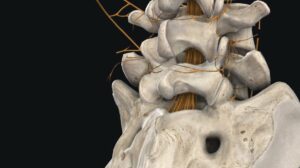NEW YORK (Reuters Health) – The diagnostic yield of transbronchial biopsy of pulmonary nodules is improved when bronchoscopy is guided by various techniques, and the risk of pneumothorax is less than with transthoracic needle aspiration (TTNA) biopsy.
Those findings come from a meta-analysis of 39 studies reported in the journal Chest online October 6.
“Guided bronchoscopy may be an alternative or be complementary to TTNA for tissue sampling of PN (pulmonary nodules), but further study is needed to determine its role in the evaluation of peripheral pulmonary lesions,” conclude Dr. Jessica S. Wang Memoli, at Washington Hospital Center, DC, and colleagues.
They explain that more pulmonary nodules are being identified through CT exams, and when biopsy is indicated, transthoracic needle aspiration is currently recommended because it has a diagnostic yield of 90%. However, the risk of a pneumothorax with TTNA is about 25%.
Traditional bronchoscopic biopsy has a diagnostic yield of 14% to 65%, the authors continue, but new technologies have become available to help guide the bronchoscope to the pulmonary nodule. These guidance techniques include electromagnetic navigation, virtual bronchoscopy, and radial endobronchial ultrasound.
To look at the overall effect of these technologies on diagnostic accuracy, the team conducted a meta-analysis of studies that evaluated any one or combination of these guidance mechanisms. Their systematic review identified 39 relevant studies that included a total 3004 patients with 3052 lesions.
The weighted diagnostic yield of guided transbronchial biopsy was 70.0%, Dr. Wang Memoli and colleagues found. The overall adverse event rate was 1.6%, with nearly all of the events being pneumothorax.
“Guided bronchoscopy for evaluation of PN provides a reasonably high diagnostic yield with a low side-effect profile,” they conclude.
Given that the ability of bronchoscopy to reach peripheral pulmonary nodules will improve further, they add, “It has become increasingly more important to determine the role of these guided procedures in the evaluation of patients with the goal of these emerging techniques to be to identify malignancy quickly while limiting risk to the patient.”
Reference:
Meta-Analysis of Guided Bronchoscopy for the Evaluation of the Pulmonary Nodule
Chest 2011.




